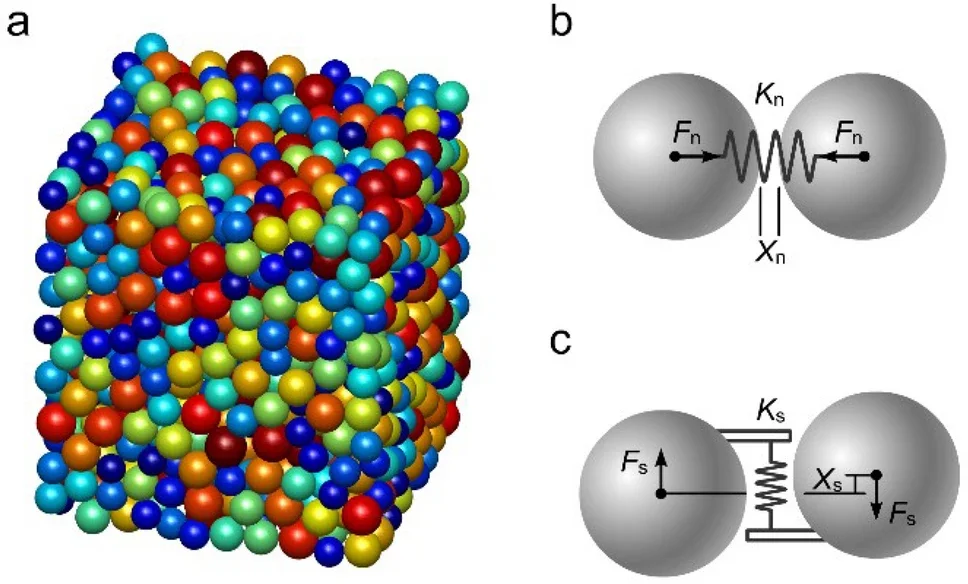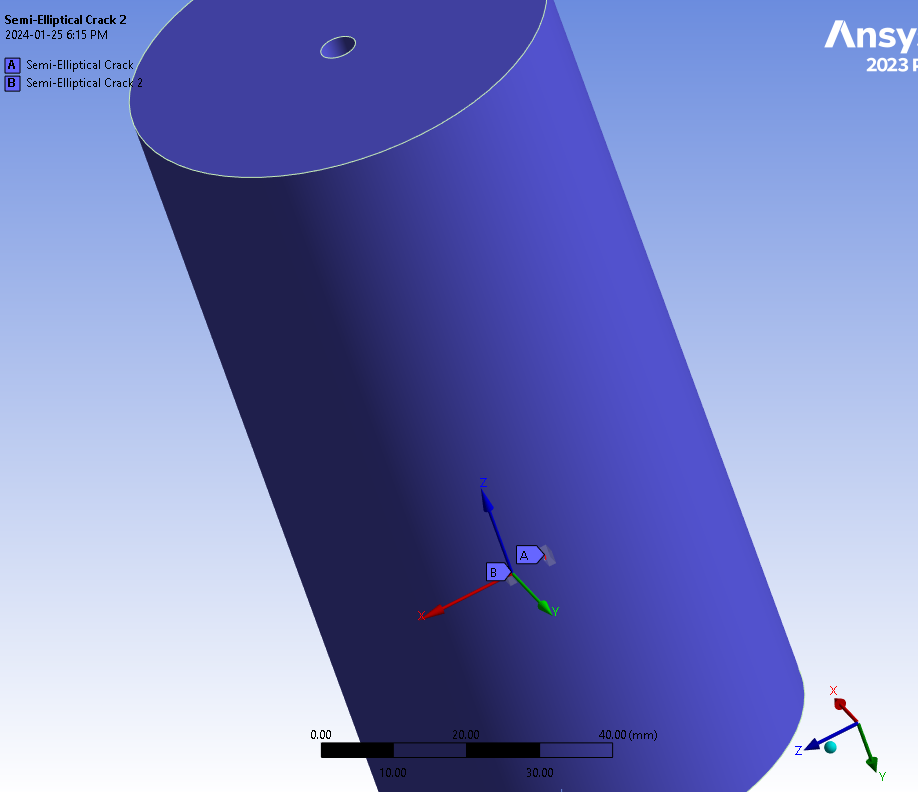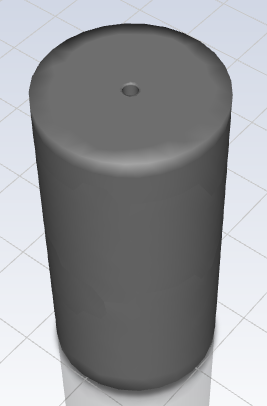-
-
December 31, 2023 at 10:06 pm
Atif Ismail
SubscriberDear All,
I am a graduate student, working on discontinuum numerical simulation of hydraulic fracturing in which I am simulating the triaxial testing of shale reservoir in hydraulic fracturing conditions. I am confused with the capabilities of ANSYS to do that.
ANSYS ROCKY DEM: I am planning to make a rectangular block of 400 X 400 X 400 mm with a hole at the top center of specific dia.
ANSYS FLUENT: Then imortarting the model to Ansys Fluent to add water and other phase flow parameters,
ANSYS Mechanical: At the end, I am going to merge that to Ansys mechanical to transfer the information from Fluent under specific stress conditions.
Is this worflow doable ? kindly comment. -
January 2, 2024 at 2:23 pm
Rob
Forum ModeratorI suggest reforming the question - what fracture mechanism are you wanting to model? In fracking (as I understand it) high pressure liquid is injected with particles; the liquid fractures the rock and the particles prevent the fracture from closing up again when the pressure is dropped. So, what are you trying to model? Note, I know enough about fracking to understand the approach, but probably don't know (m)any of the specific terms used.
-
January 4, 2024 at 9:53 pm
Atif Ismail
SubscriberDear Mr. Rob,
Thanks you for your response.
In the base case, I am going to study the hydraulic fracturing mechanism under following conditions;
*Fracturing conditions: Linear Elastic Fracture Mechanics
* No considerations of Proppants (Particles in the fluid)
I was working comparison of laboratory and numerical simulation results of hydraulic fracturing (Geometry, width, length etc. of fractures). Ideally the methodology require the consideration of porous media as partilcles (DEM) for better comparison but I am not sure if I will be able to do that on ANSYS or not.
I want to perform the study using different injection fluids (Water, CO2, Supercritical CO2 etc.) after developing the case.
The structure of the simulation includes; a cylindrical/block sample having a axial load and confining load, injected by a high pressure fluid in the sample until a fracture is generated. As, you mentioned then the pressure will drop with time.
Kindly if you assist,
Can I perform this simulation without consideration of the preexisting fracture if I am going to prepare the initial model in the ansys fluent and coupled with mechanical?
Can I prepare the particle based of the rock model in ansys and do the above mentioned work?
Can I consider a supercritical CO2 injection case in the sample; since there will be special consideration of the pressure and temperature condition during the fracturing proces (T > 31oC, P > 1070 psi).
Thanks a lot for your time and consideration. If you need any further information, kindly let me know.
Regards, -
January 5, 2024 at 10:40 am
Rob
Forum ModeratorOK, thanks for the explanation. Please also note that I (as Ansys staff) am not permitted to give detailed engineering responses to comply with Export Law.
Mechanical has a fracture model, so could be used for crack formation (I don't know much about it as I'm on the fluids side). Alternatively, Rocky (DEM solver) has various particle contact models, one of those should permit breakup of agglomerations with different effects for when they touch and subsequently break if the effect is cyclic. Flow, is Fluent's domain. Supercritical fluids are OK, but phase change in those can be very complex. Convergence may be difficult simply due to the pressures involved in these sorts of models.
You may want to read SPE 122361. "Understanding the Near-wellbore Phenomena for Hydraulically Fractured wells: A Comprehensive Inflow Performance Numerical Model"; Maria-Alejandra Jimenez, SPE and Juan Carlos Chavez, SPE, Senergy (GB) Ltd. This paper was prepared for presentation at the 2009 SPE European Formation Damage Conference held in Scheveningen, The Netherlands, 27–29 May 2009. For an idea of near well flows, fracture wasn't covered but it's potentially a useful "old" reference for the wider literature review.
So, yes, you can do something with the Ansys tools but it's not an easy project. I also advise doing some background reading of the solver theory to get a better idea of the tools. Rocky documentation should be available via the Ansys Help in 2024R1, and that's due "soon".
-
January 25, 2024 at 7:51 am
Atif Ismail
SubscriberThanks a lot for your detailed answer and support.
Kindly if you may answer me in some of following follow up questions.
If I want to inject the fluid in ansys fluent in the fracture that I have modelled in ansys transient, how I may do this thing because I am unable to see the fracture of the model in ansys fluent?
How I can find the fracture width and length for specific amount of injected fluid?
How to analyze the fluid viscosity effect on hydrualic fracture width and length?
Regards, -
January 25, 2024 at 9:05 am
Rob
Forum ModeratorFor the coupling you need to have a fracture already present as we can't alter topology in the FSI function. Also, until the fracture has a finite thickness there's nowhere to put the mesh.
In terms of modelling how much/big a fracture is, you may need to review the FSI materials: it's an area I've modelled in once to prove how easy Workbench was in R13! As you're looking at sticky spheres the new Rocky material (went live this week) on Learning will also be of interest.
-
January 26, 2024 at 12:29 am
Atif Ismail
SubscriberThanks a lot for your prompt reply. Kindly if you may share any reference material for the FSI modeling for hydrualic fracturing that you had performed. In FSI, did you coupled fluent with transient mechanical or static mechanical?
Actually, at the moment I am trying to couple transient mechanical with fluent for simulation of hydrualic fracturing. In which, pore pressure from the fluent will be transferred to the transient mechanical for recaluclations of the displacements which will be again transferred to fluent (workflow).
Yes, I am considering the preexisting elliptical cracks at the end of the sample as shown in below figure.
I want to extert the pore pressure on the fracture so that I may see the change in the attributes of the fracture (length and width). I have considered two fractures (A and B) propagating away from the borehole.
If I want to extert pore pressure of fracture from fluent to mechanical, since I am unable to see the modeled fracture (preexisting) in fluent as in below image, how I may select the outlet for pressure in the fluent? If I select the end of the borehole as outlet, how that overall pressure will be transferred in the transient mechanical to be extered specifically on the fracture not on the walls of the borehole.
Thanks a lot for your time and considerations to answer my questions.
Regards, -
January 26, 2024 at 10:07 am
Rob
Forum ModeratorThere are some crack modelling options in Mechanical, those should be in the documentation. For more "normal" FSI once the initial fracture has opened I think the general FSI guidelines will hold.
-
February 3, 2024 at 3:03 am
Atif Ismail
SubscriberThanks a lot for your valuable comments.
Kindly if you guide me further.
How to see the elliptical fracture (preexisting) in the ansys fluent? So that fracture may be considered as a outlet in the ansys fluent.
Regards, -
February 5, 2024 at 9:51 am
Rob
Forum ModeratorYou'd need to include the fracture in the geometry, ie has an open space.
-
- The topic ‘Hydraulic Fracturing Simulation (Discontinuum)’ is closed to new replies.


- air flow in and out of computer case
- Varying Bond model parameters to mimic soil particle cohesion/stiction
- Eroded Mass due to Erosion of Soil Particles by Fluids
- I am doing a corona simulation. But particles are not spreading.
- Issue to compile a UDF in ANSYS Fluent
- Guidance needed for Conjugate Heat Transfer Analysis for a 3s3p Li-ion Battery
- JACOBI Convergence Issue in ANSYS AQWA
- affinity not set
- Resuming SAG Mill Simulation with New Particle Batch in Rocky
- Continuing SAG Mill Simulation with New Particle Batch in Rocky

-
4512
-
1494
-
1386
-
1209
-
1021

© 2025 Copyright ANSYS, Inc. All rights reserved.







